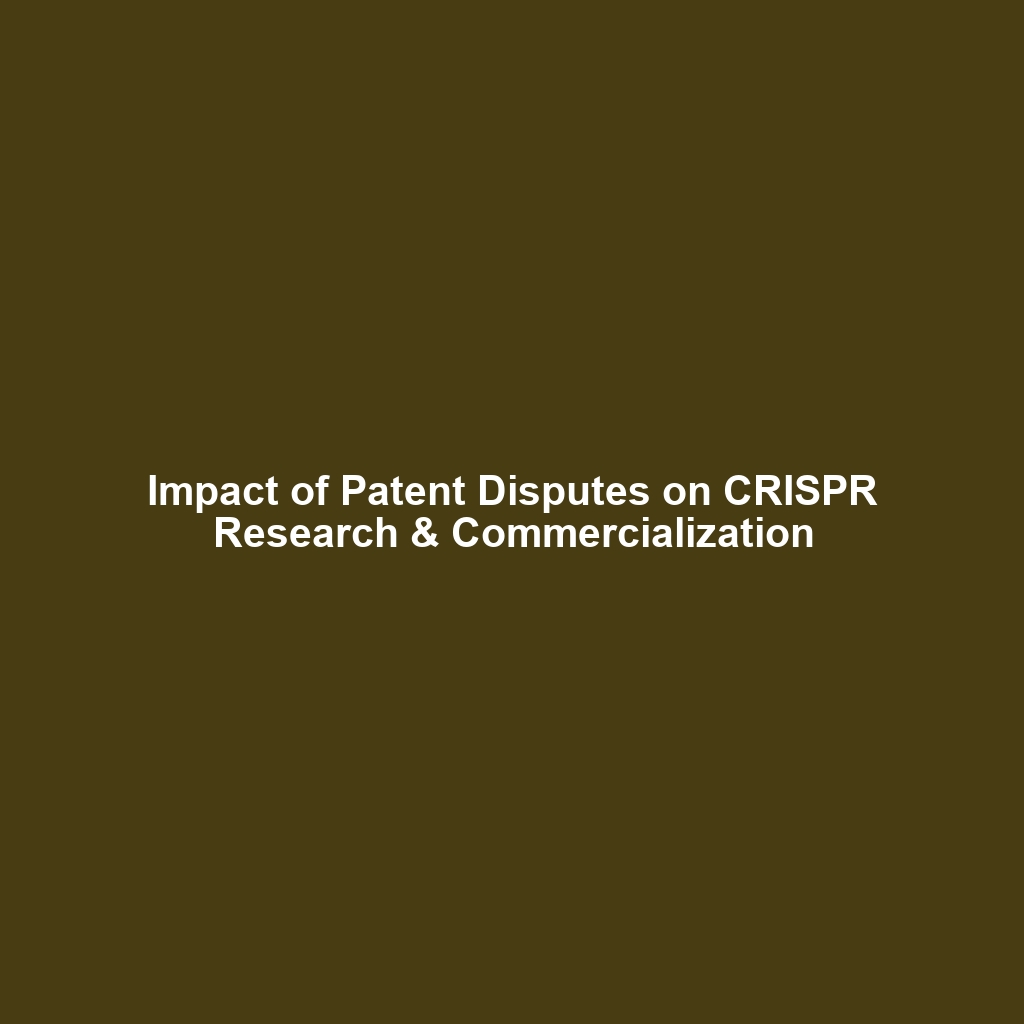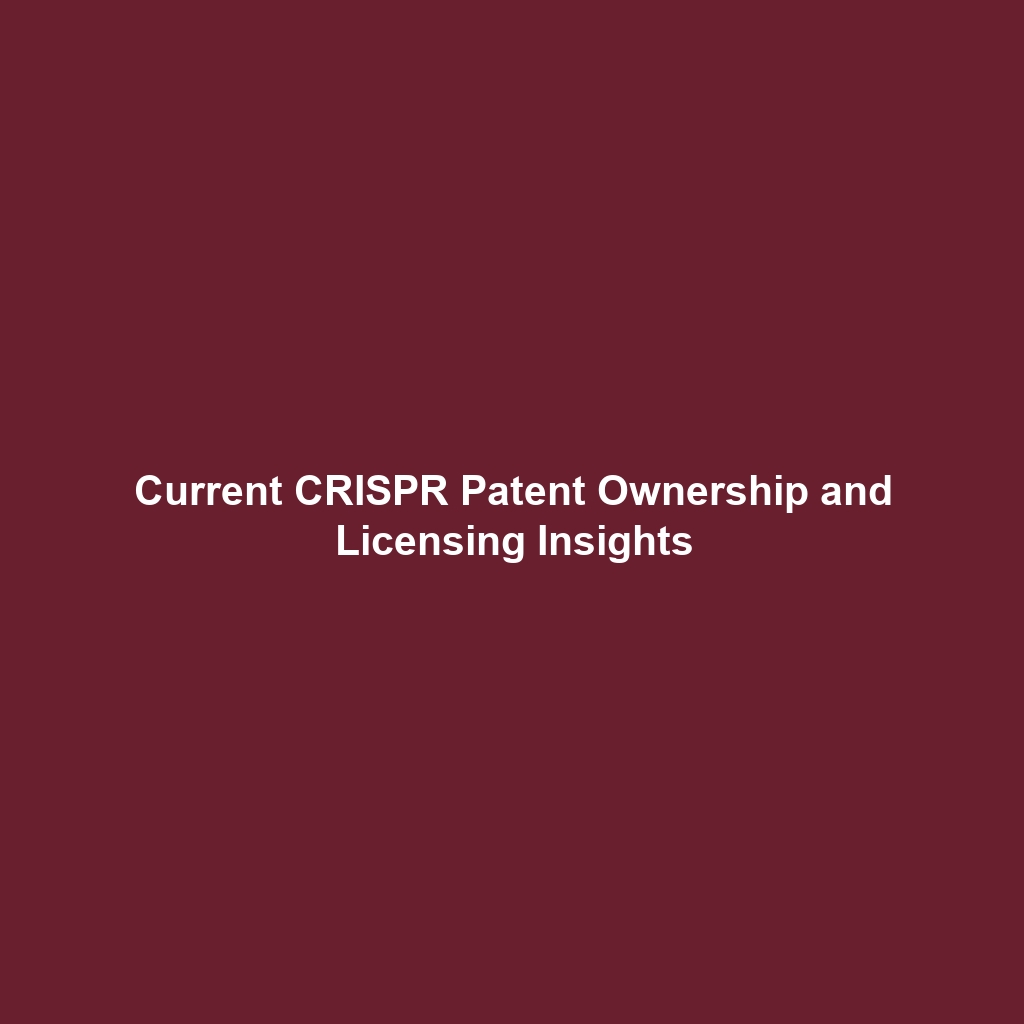Intellectual Property Battles: The CRISPR Patent War
The intellectual property landscape surrounding CRISPR gene editing technologies has sparked intense legal battles, commonly referred to as the CRISPR patent war. This conflict is not only pivotal for the companies and researchers involved but also for the future of gene editing technology at large. The outcomes of this war will influence innovation, access to technology, and ethical considerations in biotechnology, underscoring the significance of intellectual property in shaping the future of CRISPR advancements.
Key Concepts
The CRISPR patent war centers around several key concepts:
- Patent Rights: Understanding the rights granted by patenting CRISPR technologies, which protect intellectual creations and incentivize innovation.
- Prior Art: The debate about who invented CRISPR first, considering whether earlier publications or patents can impact current claims.
- Licensing Agreements: The potential transactions and agreements that can arise as entities navigate the patent landscape and seek permission to utilize CRISPR technologies.
Applications and Real-World Uses
The implications of the CRISPR patent war extend into various real-world applications:
- Medical Research: How CRISPR gene editing is revolutionizing the development of new therapies for genetic disorders, making it crucial to secure patent rights.
- Agricultural Innovation: CRISPR’s role in creating genetically modified crops that can withstand climate change, highlighting the need for clear patent protections.
- Biotechnology Startups: How emerging companies are navigating patent rights to leverage CRISPR for commercial applications in pharmaceuticals.
Current Challenges
Despite the advancements in CRISPR technology, several challenges persist:
- Legal Conflicts: Ongoing litigation among institutions claiming patent rights can stifle innovation and collaborations.
- Ethical Concerns: The implications of patenting life forms raises ethical questions that can complicate public perception and regulatory frameworks.
- Global Discrepancies: Variations in patent laws across countries can create barriers for international research collaborations.
Future Research and Innovations
The future of the CRISPR patent war is tied to ongoing research and innovations:
- Next-Generation CRISPR Technologies: Breakthroughs in efficiency and accuracy of gene editing call for updated patent strategies to protect these innovations.
- Collaborative Models: Increased collaboration and openness in research may shape new forms of intellectual property that better benefit society.
- Emerging Market Trends: The rise of CRISPR-based therapeutics and diagnostics is steering financial investment and necessitating clear patent guidelines.
Conclusion
Ultimately, the CRISPR patent war exemplifies the intricate relationship between intellectual property and technological advancement in CRISPR gene editing. As this battle unfolds, it holds significant implications for innovation, accessibility, and ethical considerations in the biotechnology sector. Staying informed on the developments of this patent landscape is crucial for researchers, investors, and policymakers alike.
For further reading on gene editing advancements and patent regulations, check out our articles on Genome Editing Technologies and Ethics in Biotechnology.


